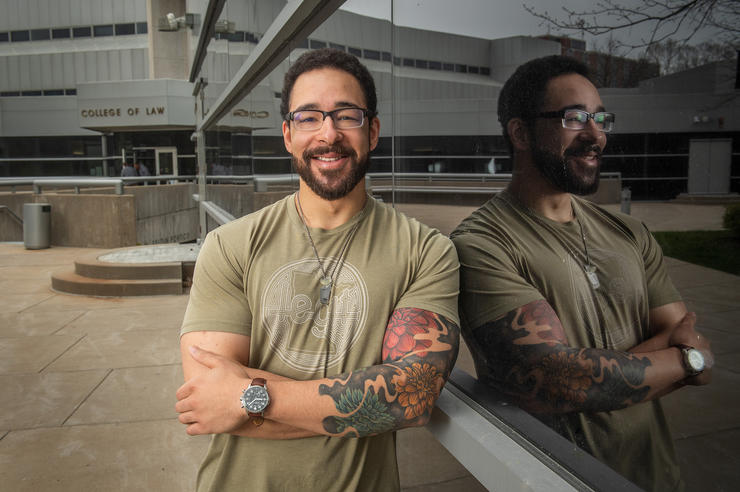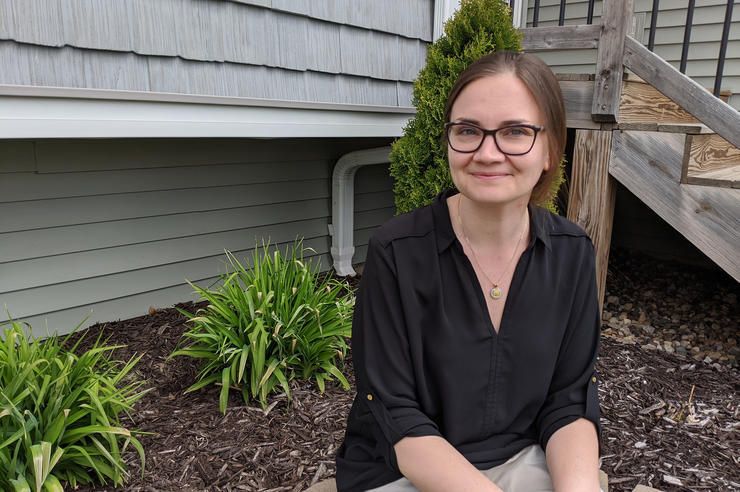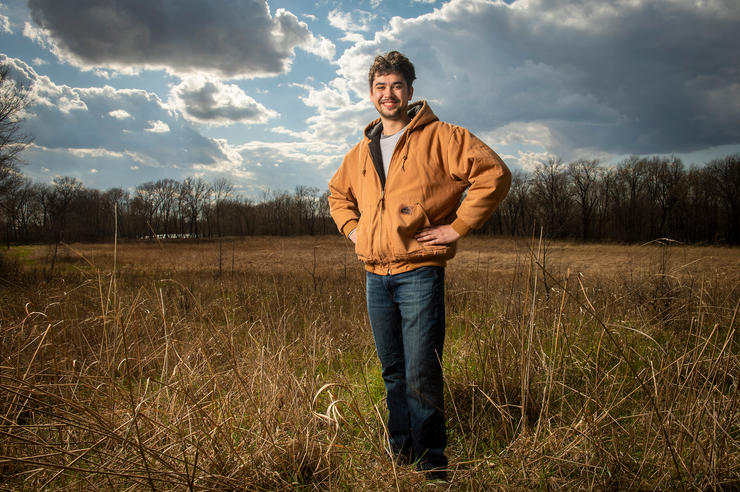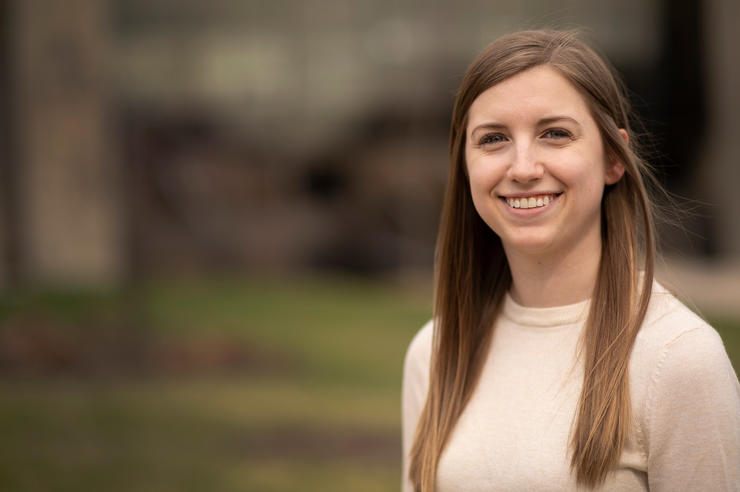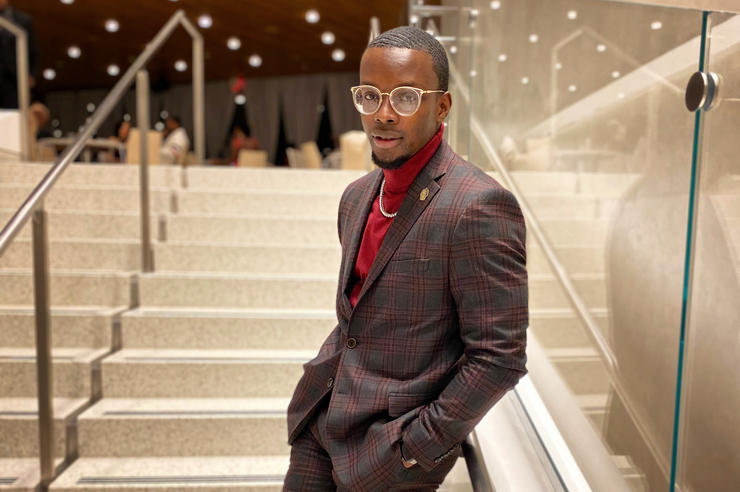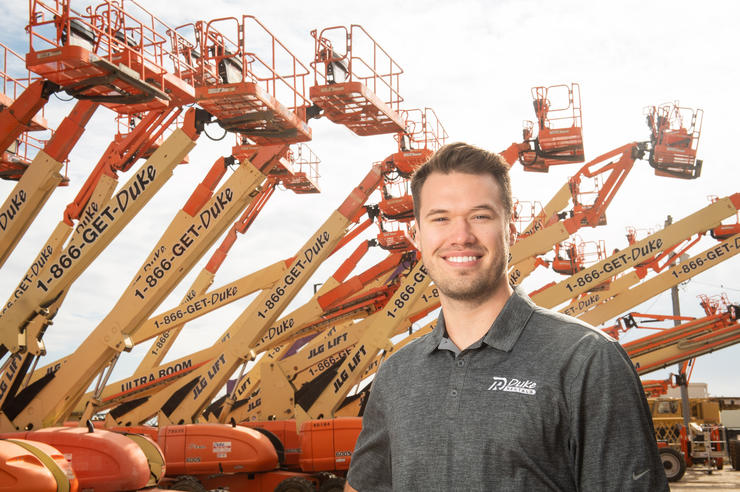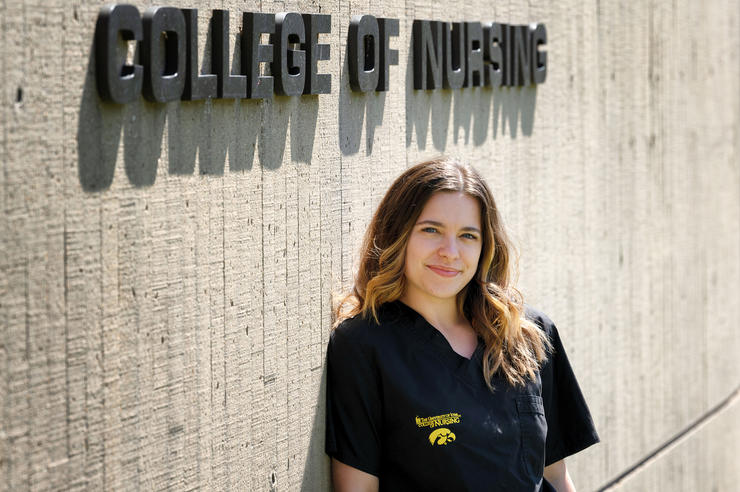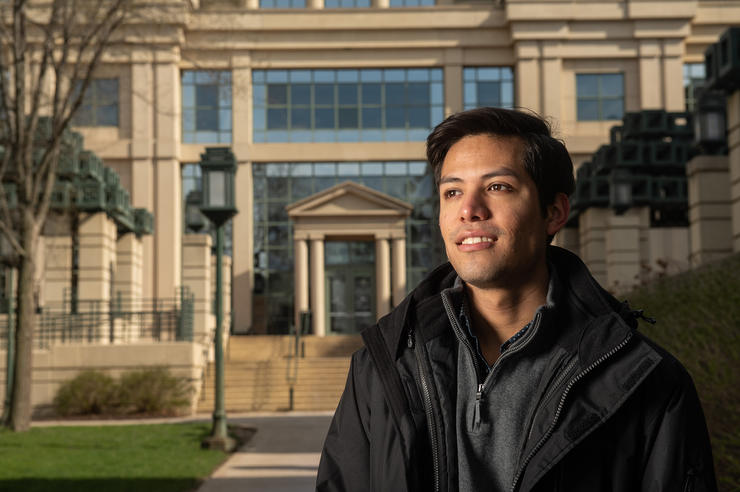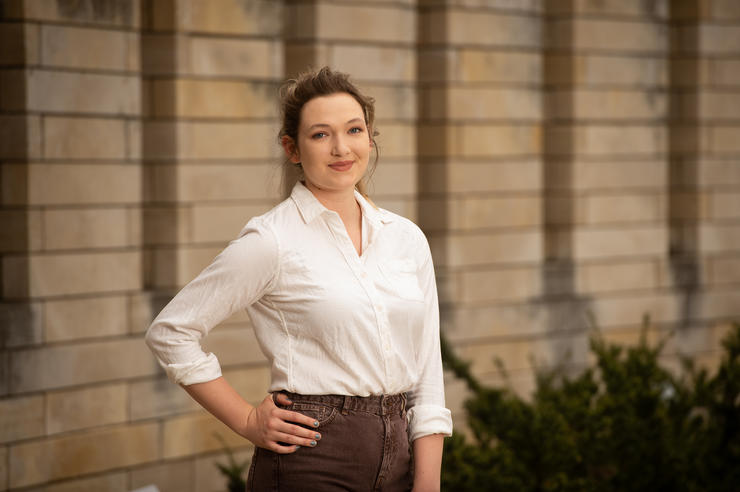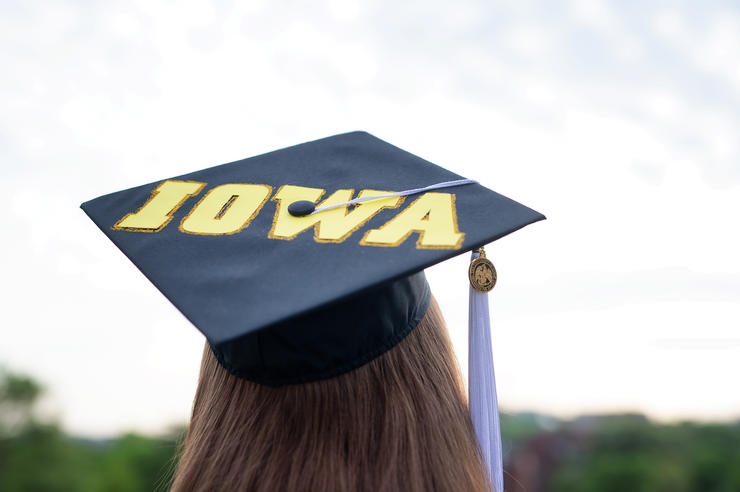A ‘Switch’ that could change lives
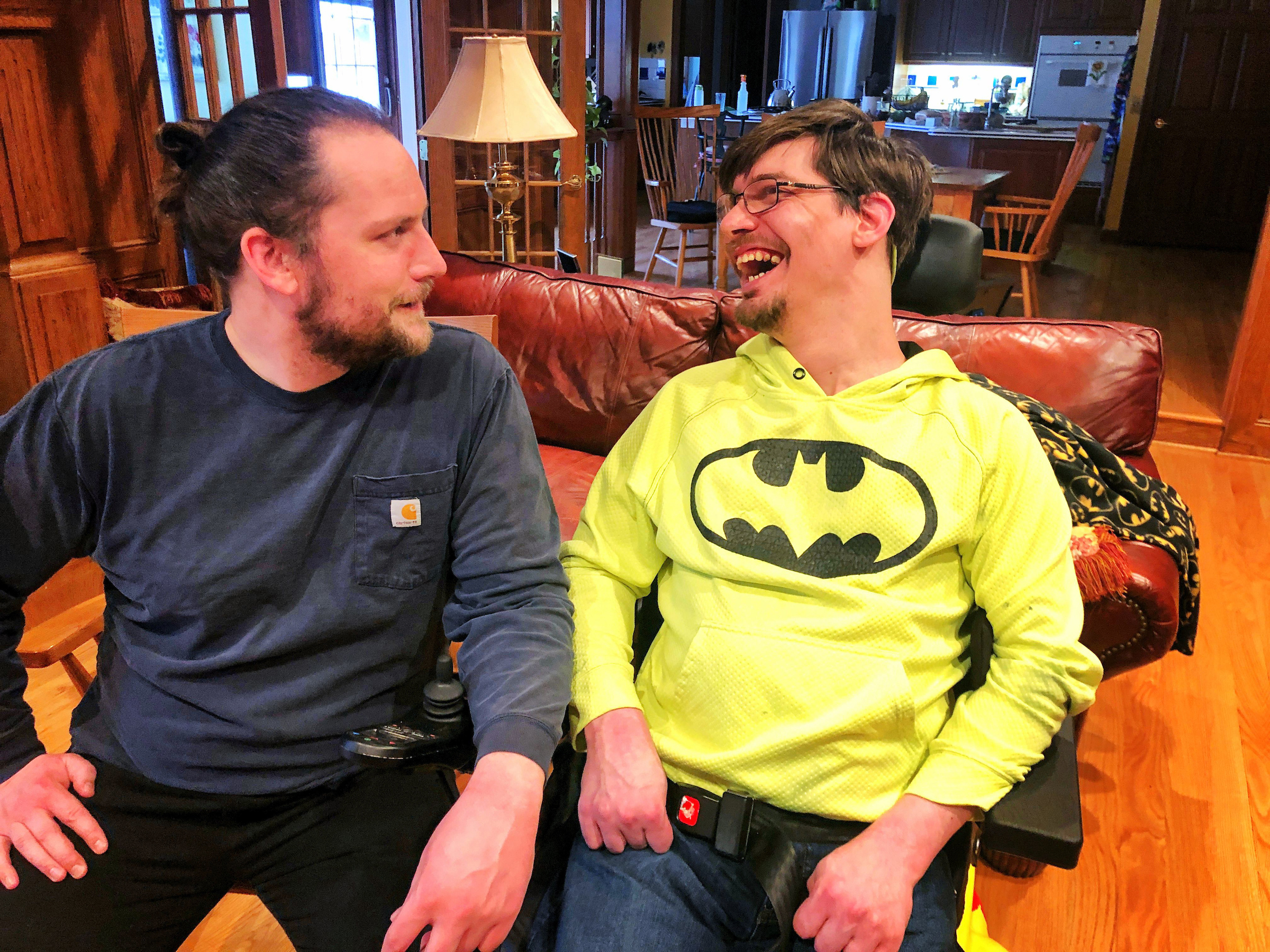
Biomedical engineering major Sean Maxson, left, with his brother, Colin, who played an unexpected but significant role in Sean’s capstone design project, at their parents’ home in Des Moines.
Sean Maxson
Degree: BSE, Biomedical Engineering, with focus area in Biomechanics and Biomaterials
Hometown: Des Moines, Iowa
Future plans: Gain experience in the industry, perhaps by working in a consulting role, before possibly pursuing graduate school.
Sean Maxson’s path to academic success has been a winding one, but that indirect route helped him develop discipline and focus—and discover a source of inspiration that was there all along.
Maxson, who graduates in May at age 36, says there’s no way the 18-year-old version of himself, who left high school early and finished through an at-risk youth program, would believe he’d be doing engineering mathematics or taking courses in cardiovascular biomechanics.
“When I left high school, I had no idea what I wanted to do,” says Maxson, a Des Moines, Iowa, native. “I just had zero interest in school. I didn’t really see much point in any of it.”
Today, he not only sees the point but has found a of purpose: develop technological innovations that can provide more independence for people with paralysis or other similar conditions. For his yearlong capstone design project, Maxson and his team of fellow fourth-year students developed SwitchAble, a device designed to allow people with limited fine-motor control to use touch-screen devices.
“It’s been a long path,” he says.
After a brief stint in the Army, Maxson went to culinary school and worked for a time as a sous chef.
“I liked what I was doing, but I didn’t have the breadth of education I wanted,” he says.
Partially inspired by his father’s career as a physician, Maxson initially enrolled at Iowa in the fall of 2010 to study biology, with the intent to pursue medical school. But after two years, and after seeing his father experience professional frustrations, Maxson wavered.
“Once again, I found myself in a position where I was unsure what I wanted to do but knew I was going to be wasting money and time if I was still in school,” he says.
“Sean and his team have done a great job with every step of the process, from identifying needs to brainstorming concepts to successfully building working hardware and software components. This project has real potential to help a significant number of people.”
So, he went to work as a salesman at a car dealership in Cedar Rapids, Iowa. “I discovered that I had absolutely zero interest in sales,” Maxson says. “It was something I could do but was just not my cup of tea.”
Yet his return to the biological and medical path happened at the dealership, thanks to connections made with customers who worked for Cedar Rapids-based Collins Aerospace.
“The engineers who came in were my favorite customers,” he says. “They would have very grounded, logical concerns and questions, and I had an easy time communicating with them on that level. Then once I became a finance manager, I talked to them more often, and I started learning about their work. It was an eye-opener: engineering was interesting.”
An aptitude test confirmed Maxson’s hunch that he’d do well in the engineering field. He considered attending another institution for its engineering program but realized he wanted to pursue biomedical engineering—and the University of Iowa had the only program in the state offering the major.
Biomedical engineering links biology, medicine, and engineering to improve human health. U.S. News & World Report ranks Iowa’s undergraduate program, which is one of eight undergraduate programs offered by the College of Engineering, in the top 20 percent of engineering programs nationwide. For their capstone senior design projects, students engage in a yearlong project in which they apply electronics, or mechanics and programming, to solve a real-world problem that affects patients’ lives.
“It felt like a good blend of my prior biology study and my interest in engineering, along with a great opportunity to be on the cutting edge of patient care,” he says.
For their capstone project, Maxson and his teammates initially planned to work with a young car-accident victim who was paralyzed. Their goal was to develop a program that would simplify the actions required to navigate through a touch-screen device like a tablet.
“If you think about all the gestures it takes to use a touch screen, like pinching to zoom in or out, or rolling your thumb upward or downward to scroll, those are pretty complex movements that require some fine motor control,” Maxson says. “Our goal was to enlarge the input commands so the patient wouldn’t have to select such a fine point on a screen. Rather than have to do all those things like tap, pinch, and scroll, we wanted to simplify it so that they’d be literally just touching buttons. If you can push a button, you can navigate through.”
But when circumstances led to that patient becoming unavailable, as well as the next one the team had lined up, Maxson turned to a different but familiar source for help: his younger brother, Colin, who has severe cerebral palsy. Colin, 35, uses a wheelchair and owns an iPad, but his mobility and communication are limited, Maxson says
Maxson thought about his brother’s experiences during their childhood and used these to inform the button design. “In the past, he has used software programs that would aid his speech through menus and touch-screen selections, but he’s struggled using those—it may have just been difficult to make a selection on the screen,” he says. “I want to help people overcome those challenges.”
After Maxson and his team developed a grid to determine the size of the button they would need to create, Maxson enlisted his parents to help Colin conduct multiple trials at home in Des Moines. The team used measurements of places he’d pushed, followed by statistical analysis, to determine the average distance from the target. This helped determine the required button radius and spacing necessary for the user to able to touch the button 95% of the time. Maxson says this work, and changing from the initial focus on paralysis, allowed them to create an improvement that could help not only people with cerebral palsy but also the elderly and people with tremors or neurological conditions affecting their motor function.
Seth Dillard, associate professor of instruction in the Roy J. Carver Department of Biomedical Engineering and one of Maxson’s team’s capstone design instructors, praised the team’s project for its seeming simplicity, noting that it has the potential to help many and was neither costly nor complicated.
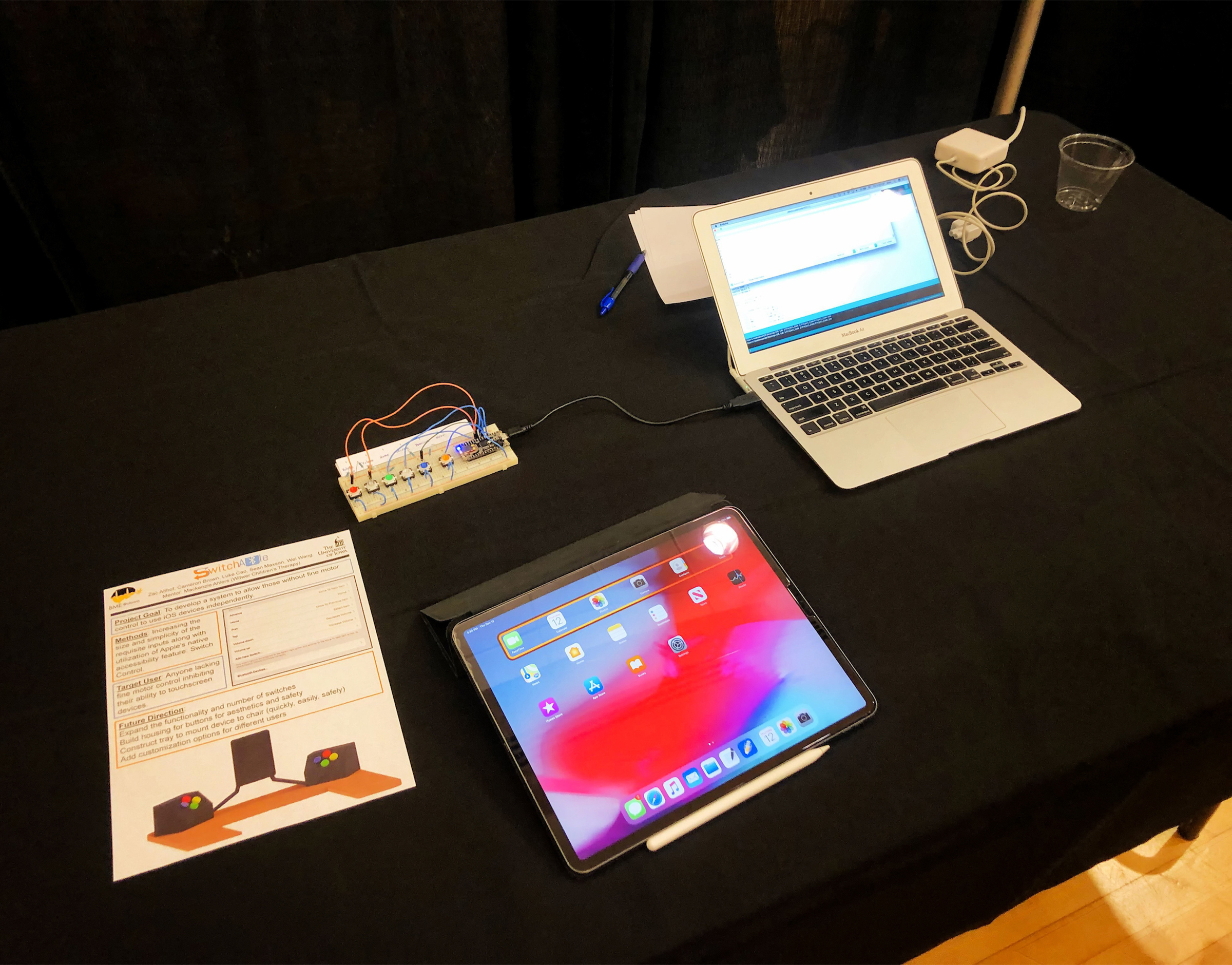
The proof-of-concept prototype the team had completed by the end of the fall semester, before the pandemic put plans for the working prototype on hold. Maxson and his team designed the SwitchAble program to assist tablet users who have limited fine-motor control.
“Good design work takes a talent for connecting ideas; openness to new insights; and plenty of curiosity, compassion, and dedication,” says Dillard. “What has made Sean such a pleasure to get to know and work with is that he came into our department already in possession of these intrinsic qualities. It’s been fun to watch him really take off with the SwitchAble project. The team’s prototype is simple and thoughtful. But that simplicity doesn’t come easily. Sean and his team have done a great job with every step of the process, from identifying needs to brainstorming concepts to successfully building working hardware and software components. This project has real potential to help a significant number of people.”
Maxson’s team focused on iOS devices initially, with plans to expand compatibility in the future. They were preparing to start manufacturing a final prototype—and had been invited to participate in the Discovery Medical Center’s 2020 Assistive Tech Challenge in Rochester, Minnesota—when the coronavirus pandemic hit.
Maxson hopes he and his team will one day be able to complete the project. For now, he plans to focus on finding a job. And he continues to be motivated to find ways to help those with limited mobility.
“If I can help people retain some autonomy and enjoy having that, and if I can remove some of the burden on caretakers, that feels like something worthwhile to do,” he says.
